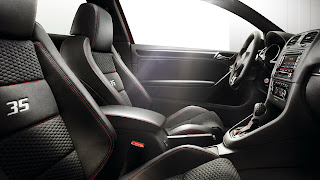
Volvo XC60 will be the star of its lines in 2009 that combines both features crossover allure sport, classic design and elegant finesse, but especially for innovations to the security systems that can make history. The interior is also impressive, spacious, comfortable, intelligent design arguments itself.
Volvo XC60 is the nervous and powerful engines both petrol and diesel. Gasoline engines are 3-liter six-cylinder turbo train, a force of 285 horses. Turbodiesel engines have a capacity of 2.4 liters and an output of 163 or 185 hp with a five-cylinder compression. Because of the high-performance four-wheel drive XC60 feel comfortable in any type of road you approach. The feeling of stability and safety is guaranteed even on slippery surfaces. Safety features include anti-theft systems facilities, which may involve including laminated glass; (CSR rollover protection for recovery and maintaining vehicle stability during sudden maneuvers and ROPS, to protect vehicle occupants in rollover event), Alcoguard system that prevents lead drunk car, sound system alerting the driver when it shows signs of inattention, leaving the lane warning system, collision warning system and the automatic brake, City Safety, the innovative.

Here are the latest technology in terms of brake at Volvo! City Safety is an intelligent system able to brake in an emergency only. A kind of guardian angel of the road, meant to protect us from the worst.
City Safety is placed front inside windshield, the rearview mirror, and its job is to detect the laser sensors, any car that is in front, within a radius of 10 meters.Is actually an optical device, it should be noted that its detection may be limited in case of a dirty windshield, affected by dust, water, fog or snow. So always clean the windscreen must be maintained.When you have car, approached too quickly by another, the system triggers automatic braking to avoid collision.This innovation is designed for urban traffic conditions, for preventing the collision of two vehicles at low speeds, up to 30 km / h. Knowing that most accidents (80%) occur in the city, of which 75% occur at speeds of up to 30 miles per hour and is due in large part to inattention.City Safety is ideal, especially in traffic jams, when a second of distraction can create great inconvenience to all involved.
And if you still could not have avoided the collision, the impact effects are much reduced, protecting the passengers and the risk of serious injury.A speed of up to 15 km / h City Safety can entirely avoid the blows. At a speed between 15 and 30 km / h, its mission is to reduce speed as possible before impact.The intelligent system makes 50 calculations per second to detect the braking power needed to avoid impact.
New function has been training and other safety systems built in, controlling adaptive airbags and load limiters safety belts, depending on the severity of the impact (PRS).City Safety will now only fit the Volvo XC 60. If, however, convince and efficiency will be recognized, could become a security system indinspensabil, as the example of ESP, which keeps the car's grip on the ground. The latter has become a measure binding security criteria recognized by EuroNCAP.








 5:12 PM
5:12 PM
 Catalin
Catalin



 Posted in:
Posted in: 























































